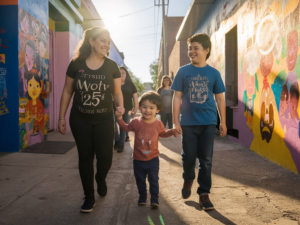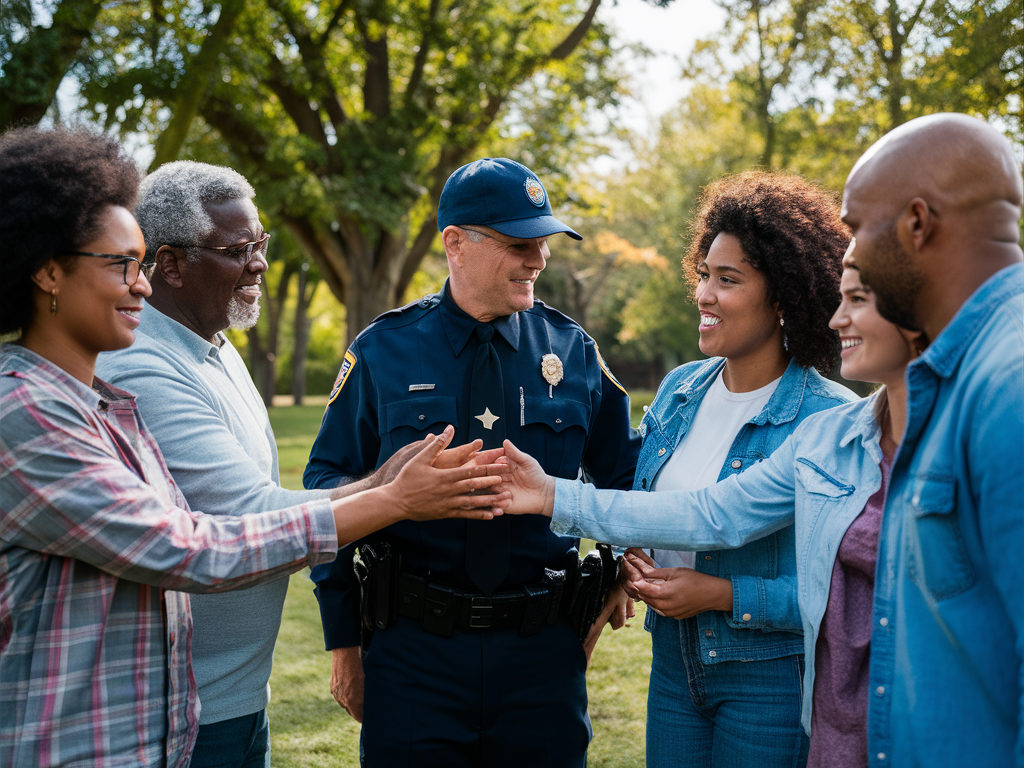You may not think about it every day, but safety and security are the foundation upon which every thriving community is built. Without these core principles in place, growth, collaboration, and innovation simply can’t happen. If people don’t feel safe, they can’t contribute their best ideas, time, or energy. Creating secure and inclusive spaces is not just a matter of keeping crime at bay—it’s about fostering an environment where every community member, regardless of age, gender, background, or belief, can feel valued and protected.
When we talk about safety and security in community development, we’re talking about more than just physical safety. It’s about psychological security, inclusivity, and ensuring that every person has the opportunity to participate fully in community life. This article will take you through the key reasons why safety and security are critical in community building and the strategies you can adopt to ensure a safe, inclusive environment for all.
Why Safety and Security Are Non-Negotiable
Ask yourself this: How productive or innovative can people be if they constantly worry about their safety? Whether it’s concern over physical dangers like crime and violence, or emotional harm like discrimination or exclusion, insecurity stifles progress. Communities that fail to prioritize safety create barriers to growth, collaboration, and empowerment.
By ensuring everyone in the community feels secure—whether that’s in public spaces, online, or at community events—you’re not just protecting people from harm; you’re opening the doors to greater participation and creativity. When people feel safe, they can focus on building businesses, starting community initiatives, or simply enjoying their lives without fear. And that’s when real progress happens.

The Intersection of Safety and Inclusivity
Safety isn’t just about preventing crime or installing better lighting in public areas—though that certainly helps. It’s also about creating environments where everyone feels welcome, included, and heard. It’s about fostering social security, where marginalized groups don’t feel left out or discriminated against. That’s when safety transcends its traditional meaning and becomes the driving force behind a truly inclusive community.
Inclusion and safety go hand in hand. If certain groups of people feel unsafe—whether due to gender, race, religion, or economic status—they can’t fully participate in the life of the community. And a community where some voices are missing is one that’s operating at a fraction of its potential. Ensuring safety for all isn’t just a moral imperative; it’s a strategic one.
How You Can Foster Safety and Security
So, how do you build safe and inclusive spaces? Whether you’re a community leader, business owner, or an active resident, you have a role to play in ensuring your environment is welcoming and secure. Here are several strategies you can adopt:
1. Engage the Community in Dialogue
One of the most effective ways to create safe spaces is to engage the community in ongoing dialogue about safety concerns. Make it a point to regularly invite community members to share their experiences, challenges, and ideas on improving safety. Public forums, town hall meetings, or even anonymous surveys can provide insights into what needs to be addressed and how the community feels about current safety measures.
When you listen, you learn where the real problems lie, and you demonstrate that every voice matters. You’re showing that safety and security are priorities for everyone, not just a select few.
2. Design Spaces with Inclusivity in Mind
Safe and inclusive spaces are, at their core, thoughtfully designed. Public areas should be accessible to all, regardless of physical ability. Well-lit walkways, accessible entrances, and clearly marked emergency resources are all basic features that ensure everyone feels comfortable in public spaces.
But don’t stop there. Consider the broader design of your community. Are there places where people of different cultures can gather? Are there public spaces where people of all income levels can feel welcome? Inclusive design goes beyond physical infrastructure and into the social fabric of the community.
3. Leverage Technology
Technology can be a powerful tool in fostering security and inclusivity. Smart lighting, surveillance systems, and emergency response apps can help create safer environments. But more than that, technology can also facilitate better communication between community members. Consider platforms where residents can report safety concerns anonymously, or systems that allow community leaders to send out real-time updates during emergencies.
Remember, technology should enhance community connections, not replace them. So use it wisely and always with the goal of creating stronger, more inclusive networks.
4. Foster Relationships Between Law Enforcement and the Community
Another key aspect of community safety is the relationship between law enforcement and residents. If law enforcement officers are seen as an integral, approachable part of the community, trust can grow. Community policing models, where officers build relationships with residents and participate in local events, can significantly improve the sense of safety and security.
This mutual trust allows law enforcement to better understand the community’s unique challenges, and it reassures residents that their concerns are being taken seriously.

The Impact of Creating Secure and Inclusive Spaces
When safety and inclusivity are baked into the DNA of a community, the benefits are extraordinary. People feel a stronger sense of belonging. They’re more likely to invest in local businesses, attend community events, and form relationships with their neighbors. They’re also more willing to step up as leaders or volunteers, knowing that their efforts are valued and protected.
Moreover, safe and inclusive communities attract talent and investment. Businesses are more likely to set up shop in areas where their employees feel safe, and new residents are drawn to places where they know they and their families will be welcomed and protected.
Your Role in Shaping a Safer, More Inclusive Future
You don’t have to be a community leader to contribute to safety and security. Everyone has a role to play, whether it’s speaking up about safety concerns, being mindful of inclusivity in public spaces, or fostering relationships with your neighbors.
Safe communities are not built overnight, but with consistent effort, empathy, and smart strategies, they can thrive. The future of your community is in your hands—and it starts with creating spaces where everyone feels secure and included. Isn’t that the kind of place we all want to live in?


